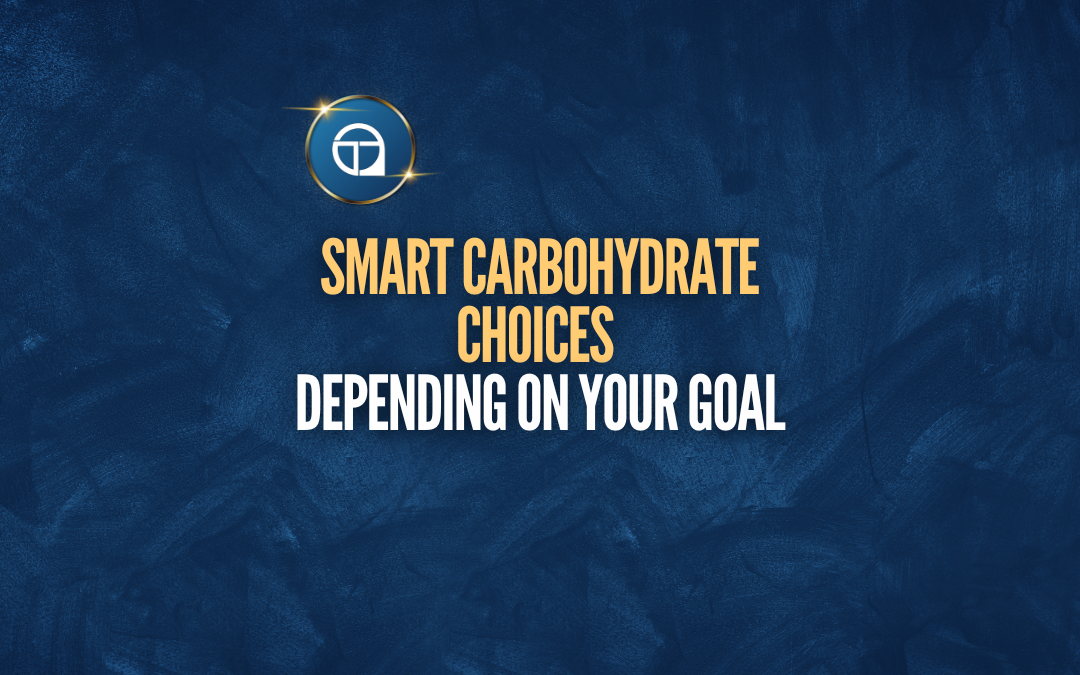Making smart carbohydrate choices is incredibly important to your dietary success. You see “just hit your calories” is really a bit of an oversimplification when it comes to giving actionable dietary advice. Obviously, hitting your calories and macronutrient targets are the big priorities when it comes to a successful diet, but the key is actually being able to hit them consistently.
One of the unfortunate downfalls of the flexible dieting era is that a very large proportion of dieters are focusing ONLY on the numbers themselves, without analysing the path that takes them there. In order to actually adhere to your diet, minimising hunger is a pretty big concern.
Hunger is, of course, subjective and multifactorial, but I think it’s obvious that dietary adherence is going to be a far more challenging task if you are consistently hungry. Although hunger isn’t related solely to the food itself, we do have a LOT of control over how hungry we feel, and some simple adjustments in food sources can make a significant difference.
One such area is in our carbohydrate choices. Making smart carbohydrate choices really can make a difference to your overall dietary success.
This post is going to be a very practical hierarchy of how “hunger [un]friendly” your carbohydrate choices are (excluding vegetables & fruits for now). So, if you are currently struggling with hunger, yet you get all of your carbohydrates from white rice and white bread, you may want to listen up. Similarly, if you are filling yourself with potatoes and porridge all day, yet struggling to hit your calories because of how full you are, then this will also be of use to you.
Smart Carbohydrate Choices
Here is a table ranking various carbohydrate sources from most satiating to least satiating based on their Satiety Index (a measure of how full a food makes you feel relative to its calorie content). Foods with high fibre, protein, and water content typically score higher on satiety:
| Rank | Food | Satiety Index/Key Notes |
|---|---|---|
| 1 | Potatoes | Most satiating food tested in studies |
| 2 | Popcorn | High in fibre, low in calorie density, very filling |
| 3 | All Bran | High fibre content promotes fullness |
| 4 | Brown Rice | High fibre and slower digestion than white rice |
| 5 | Wholemeal Bread | More satiating due to its higher fibre than white bread |
| 6 | Brown Pasta | Higher fibre, lower glycemic impact |
| 7 | Porridge | High water content, fibre, and slow-digesting carbs |
| 8 | Grain Bread | Mixed grains provide fiber and protein |
| 9 | Muesli | Contains fibre-rich oats and nuts |
| 10 | White Rice | Less fibre than brown rice, and thus provides moderate satiety |
| 11 | Crackers | Low in fibre, higher glycemic index |
| 12 | Other Breakfast Cereals | Highly variable based on sugar and fibre content |
| 13 | White Pasta | Processed, lower fibre, moderate satiety |
| 14 | White Bread | Low fibre, high glycemic index, and relatively low satiety |
| 15 | Jelly Beans | High sugar content, very low satiety |
Additional Notes:
- Potatoes: Boiled potatoes have been shown to be particularly satiating, with high water content and resistant starch.
- Popcorn: Despite its low energy density, popcorn is surprisingly filling on a per calorie basis.
- Cereals and Breads: The satiety varies widely based on fibre and sugar content. Whole grain options generally outperform their refined counterparts.
- White Bread & Jelly Beans: The low fibre and relatively high sugar content of these foods contribute to a rapid spike and drop in blood sugar, leaving you hungry soon after consumption.
So, if your carbohydrates are predominantly coming from white bread, cereal and rice, and you are dealing with hunger, you are going to need to make some changes.
And, if you are eating potatoes, porridge and wholegrain bread, yet struggle to maintain a calorie surplus, you may want to make some counterintuitive swaps.
The “best” choices are always context specific. Generally, healthy eating advice should revolve around recommending the food sources higher up on the list, with minimal amounts of those lower down. However, we all have different goals, and if you’re underweight, or simply trying to gain muscle mass, choosing more of the sources lower down may indeed be a good idea.
But the primary point I want to make is that foods like white bread, cereals, white pasta and rice make up a big portion of a lot of peoples’ carbohydrate sources, even when dieting, despite not being very satiating.
To give you some actual relative understanding, potatoes are 3 times as filling as white bread for the same calorie content. This means that to achieve the same level of fullness, you would have to triple your bread intake compared to potatoes. When you consider that, it’s pretty easy to understand how easy it is for the average person to overeat in the absence of nutritional education.
This doesn’t mean you should brand certain foods as “healthy” or “unhealthy”. It would be more appropriate to refer to them as “helpful” or “unhelpful” relative to your individual goal, and the context of your diet as a whole. The reason the context of the rest of your diet is important is that there’s no point choosing potatoes, frying them in oil and covering them in cheese, and expecting them to still be a good option for fat loss.
Similarly, some white bread with lean meat and a couple of servings of vegetables could be a good option. There are a variety of contributing factors to “satiety”, both extrinsic and intrinsic, so it really isn’t this simple, as these results are from a study that can’t simply be generalised as gospel for everyone, but the information is useful and applicable nonetheless.
Smart Carbohydrate Choices If You Are Dieting And Hungry
Choose primarily potatoes, porridge and wholegrain bread/pasta as your “starchy” carbohydrate sources, with the others included sparingly to promote dietary adherence (assuming you wish to consume them).
Smart Carbohydrate Choices If You Are Gaining And Full
Create the base of your carbohydrate intake from the more satiating carbs mentioned (to ensure adequate fibre and micronutrients), and add in sources such as white rice, cereals etc. as per your carbohydrate demands.
So, make sure you actually contextualise this information before running away with overly positive or negative impressions of certain foods in isolation. Context matters, and as always, it just depends.
*None of this changes our fruit & vegetable recommendations (which you can read more about in the diet set up articles), which is why I chose to ignore them here. They are very filling, and helpful for just about everyone, since their micronutrition makes their inclusion highly beneficial, even if they do cause you to struggle a little to hit your calories. Lean meats, vegetables & fruits should be a staple for everyone, regardless of caloric intake.
If you need help with your own nutrition, you can always reach out to us and get online coaching, or alternatively, you can interact with our free content.
If you want more free information on nutrition, you can follow us on Instagram, YouTube or listen to the podcast, where we discuss all the little intricacies of exercise and nutrition. You can always stay up to date with our latest content by subscribing to our newsletter.
Finally, if you want to learn how to coach nutrition, then consider our Nutrition Coach Certification course, and if you want to learn to get better at exercise program design, then consider our course on exercise program design. We do have other courses available too. If you don’t understand something, or you just need clarification, you can always reach out to us on Instagram or via email.

